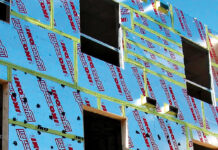By Leor Margulies
Robins Appleby LLP
Readers, how many of you out there or your children under the age of 40 use cheque books? How many of you in business actually issue cheques for payment? I bet most people under the age of 40 can’t even spell the word and yet, the tradition continues that on new home sales, whether low- or highrise, agents collect three, four or five post-dated cheques that are handwritten out and then either held by the vendor and deposited on the due dates, or sent to their lawyers on condominium projects (or lowrise projects where deposits are held in a DTA for purchase agreements contain early termination conditions relating to financing or sales) for processing.
At point of sales, cheques are filled out, photocopied and transmitted to the vendors and the lawyers by the agents, where appropriate. Do you know what it means to process five sets of cheques? Apart from the bookkeeping entries, there is the physical retention of the cheques, allocating them to a particular month and year and then physically moving them from a box with developers when purchasers and vendors agree to change the deposit dates.
Opportunity for error
The opportunity for errors in writing the cheques, deferring the cheques, depositing them and processing the cheques is enormous. All of this because that is the way the industry has always done it.
During the early days of COVID, we had a 400-unit project that had about 230 sales. The client wished to find a way to make deposits easier by making them smaller and monthly. We looked at various ways to facilitate what could be a lot of cheques coming in and ultimately, landed on using an EFT or pre-authorized debit (PAD) form for electronic funds transfer. It is something that is used by everyone for payments such as utility bills, tax bills and insurance. My wife, who is in the insurance business, suggested that we consider using EFTs. As a result, we started implementing an EFT payment process in new agreements. The real estate industry must be the last consumer industry out there that still relies on the use of cheques as opposed to EFTs. Our firm and our client have changed that.
Since then, we have encouraged very strongly our low- and highrise clients to use EFTs for payment of deposits, even where the vendor is collecting deposits themselves.
We developed a system to do withdrawals of deposits twice a month, as opposed to doing it daily. We don’t have enough time in this article to go through the entire process but it is a much more streamlined process. It is certainly far easier for purchasers and agents to fill out one PAD form than to sign up five cheques and then risk them being lost, misplaced or misfiled when the dates change during the course of a transaction, requiring a cheque to be moved from one slot in the cheque holders to another. Our spreadsheets are merely updated with the new dates of withdrawal based on client instructions.
Immediate recording
We now produce a list of deposits being withdrawn on a semi-monthly basis and send it to our clients for approval to make sure that we haven’t missed any instructions along the way. Then the semi-monthly spreadsheet is prepared by accounting in our bank’s form and uploaded for processing. No physical movement of cheques.
Some of our clients have now started using the EFT process for themselves on lowrise projects where deposits are paid directly to the vendor. NSFs are reported immediately as opposed to waiting for a bank reconciliation, allowing vendors to deal earlier with defaults.
There is one downside with using EFT for consumer purchasers. A purchaser who has given an authorization EFT can come back to his bank in the event that an improper withdrawal was made such as a wrong amount or the EFT authorization was withdrawn. His bank can then go back to the lawyer’s bank where the funds were placed (or the vendor’s bank) and require the funds to come back. If the use of the EFT was for a commercial purpose such as an investor who buys a condominium unit, the maximum time to request this reversal is 10 days.
In the six years that we have been processing EFT payments, this has never happened. What it means for the law firm is that we have to hold the deposits for 90 days. Generally, however, for condominiums, deposits do not get released immediately and by the time financing is in place and the deposit insurer is allowing deposits to be released, enough deposits have seasoned the 90 days.
Good news for builders
But the good news is there is a builder software company called SaleFish which has developed an amazing software called ProPay LX, elevating EFT withdrawals to another level. They have worked out arrangements with all of the financial institutions whereby ProPay LX will be doing the withdrawals and putting it into the lawyer’s bank accounts (saving legal time and hassle). And there are portals that give immediate access to real time information for builders and lawyers plus a system of automated reminders of pending EFT withdrawals to purchasers. Moreover, they have worked out an arrangement with one of the deposit insurers to insure over the 90 day potential for a purchaser coming back to get his deposit so that deposits can be released immediately. And much more.
There has been resistance from real estate brokers to using EFT deposits when we have suggested them, with agents claiming purchasers will refuse to use them. This is not withstanding they use them for everything else. We have developed agreements that either encourage the use of EFT and discourage post-dated cheques by way of an extra charge for deposits. For the odd purchaser who refuses an EFT deposit process, a simple amendment can be used. Overall, it has not been a problem.
So, on your next condominium or lowrise project, I suggest you consider entering the cashless and cheque-less society and join the growing group of builders and lawyers using EFTs for deposits.

Leor Margulies is Real Estate Group Co-Head, Robins Appleby LLP. robinsappleby.com.












